Apple iPad 2 GPU Performance Explored: PowerVR SGX543MP2 Benchmarked
by Anand Lal Shimpi on March 12, 2011 3:04 PM EST- Posted in
- Smartphones
- Apple
- iPad
- GLBenchmark
- iPad 2
- Mobile
- Tablets
GLBenchmark 2.0
GLBenchmark 2.0—as its name implies—tests OpenGL ES 2.0 performance on compatible devices. The suite includes two long benchmarking scenarios with a demanding combination of OpenGL ES 2.0 effects - texture based and direct lighting, bump, environment, and radiance mapping, soft shadows, vertex shader based skinning, level of detail support, multi-pass deferred rendering, noise textures, and ETC1 texture compression.
GLBenchmark 2.0 is the best example of an even remotely current 3D game running on this class of hardware—and even then this is a stretch. If you want an idea of how the PowerVR SGX 543MP2 stacks up to the competition however, GLBenchmark 2.0 is probably going to be our best bet (at least until we get Epic to finally release an Unreal Engine benchmark).
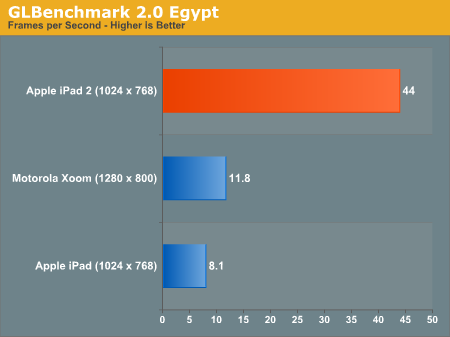
Without AA, the Egypt test runs at 5.4x the frame rate of the original iPad. It's even 3.7x the speed of the Tegra 2 in the Xoom running at 1280 x 800 (granted that's an iOS vs. Android comparison as well).
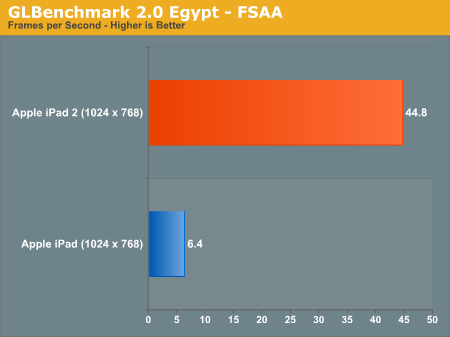
With AA enabled the iPad 2 advantage grows to 7x. In a game with the complexity of the Egypt test the original iPad wouldn't be remotely playable while the iPad 2 could run it smoothly.
The Pro test is a little more reasonable, showing a 3 - 4x increase in performance compared to the original iPad:
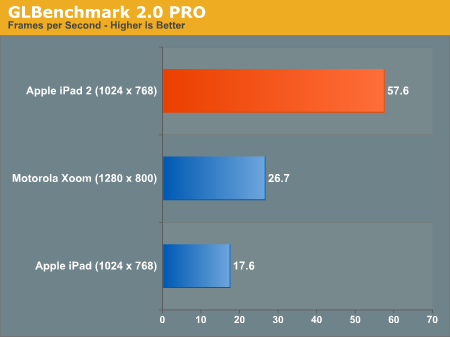
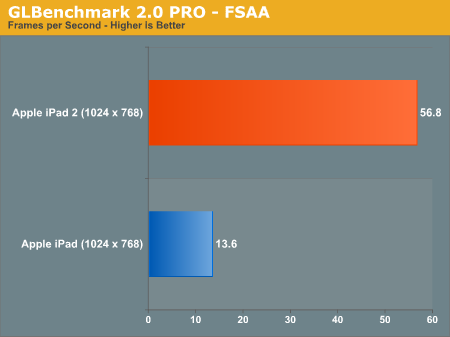
While we weren't able to reach the 9x figure claimed by Apple (I'm not sure that you'll ever see 9x running real game code), a range of 3 - 7x in GLBenchmark 2.0 is more reasonable. In practice I'd expect something less than 5x but that's nothing to complain about. We'll be doing power analysis over the weekend so expect more detail in our full review.
Putting the PowerVR SGX 543MP2 to Use: Infinity Blade
As we pointed out in our iPad 2 Preview, at least one developer already picked up on the amount of extra GPU horsepower in the new iPad 2. Epic put out an updated version of Infinity Blade with support for the iPad 2. Run it on an iPad and you'll get the same old Infinity Blade, but run it on an iPad 2 and you'll get more detail, higher resolution textures and anti-aliasing.
Remember that iPad and iPhone devices are more closed than your PC. There's no adjusting detail settings or resolution, so the target frame rate is usually what's fixed. Developers are simply able to deliver a better looking experience at roughly the same frame rate with upgraded hardware. In the case of Infinity Blade, load times are reduced thanks to the Cortex A9 CPU cores and there is some improvement in frame rate but the biggest impact comes from the improved visuals.
Below is the comparison beween Infinity Blade on the iPad and iPad 2 we ran in this morning's preview:
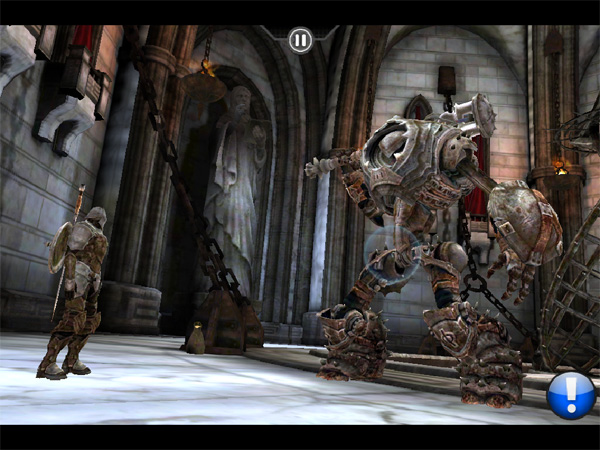
Mouse over to see Infinity Blade on the iPad 2
There's far more detail in the character models as well as the environment. Lighting looks improved and the AA is definitely appreciated.
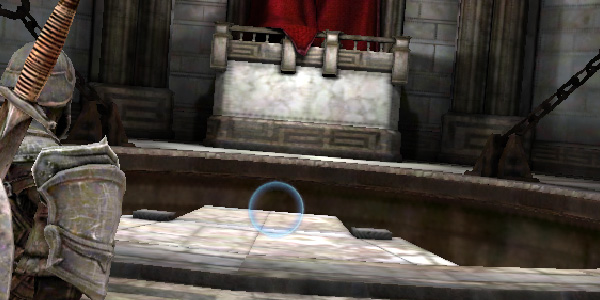
Mouse over to see Infinity Blade on the iPad 2
The gallery below has a bunch of side by side shots showing the improvements made to Infinity Blade for the iPad 2 vs. what you get when you run the game on a first generation iPad.
To Be Concluded...
We're still hard at work on our full iPad 2 review. We've got no less than four units running through battery life tests right now and there's still more to talk about in the review. We'll keep you posted, thanks for reading!


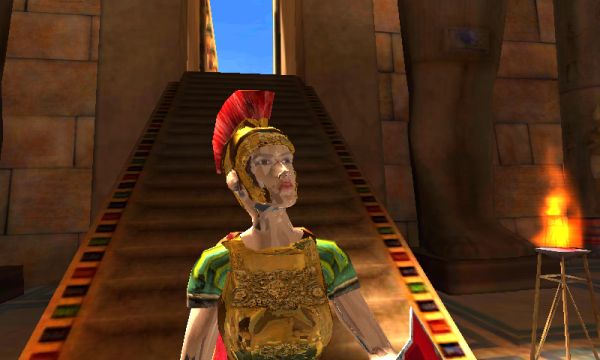














219 Comments
View All Comments
ncb1010 - Sunday, March 13, 2011 - link
Tablet is a form factor which both the Kindle reader and the iPad share. It has nothing to do with the screen tech involved or the software used.sean.crees - Sunday, March 13, 2011 - link
Tablet is not just a form factor. If that is your argument, then technically a magazine is the same "form factor", so then we must include all issued magazines.A tablet is an experience, one you cannot get on an e-reader, a magazine, a smartphone, a notebook, a PC etc etc etc. It is a unique device with its own unique segment.
Tablets include devices like Ipad, Ipad2, Xoom, Touchpad etc etc.
solipsism - Sunday, March 13, 2011 - link
You can install the Kindle app on Windows and Macs, too. I guess that makes them eReaders which you also classify as tablets, which makes the iPad marketshare under 5%. OMG APPLE IS TEH SUXS!!!1 :\ncb1010 - Sunday, March 13, 2011 - link
Umm, are we talking desktop computer Mac/Windows computers? Or are we talking notebook clamshells? tablet is a physical form factor. It has nothing to do with if it runs Kindle on Mac/Windows or not.djgandy - Sunday, March 13, 2011 - link
Yeah one product sells 3 times more than an entire group of products.So all the products in the 27% combined should get 1/3rd of the review time of the iPad.
Ringer9 - Saturday, March 12, 2011 - link
Um, "4 times more popular" means 5 times as popular. Also, as ncb1010 said, 27% to 73% is much closer to a 1:3 ratio, so the iPad is roughly 2 times more popular than other tablets. In other words, you don't know what you're saying.rquick - Sunday, March 13, 2011 - link
The multiple in 1:3 is 3, as in "3 times more popular." And 4 times more popular really does mean 4 times not 5. It is pretty simple math really. I thin what you meant was that 4 times more popular means 4 out of 5. As if it really matters. The actual multiple isn't as important as the fact that one single device is more popular than the entire remainder of the market put together, even if you try to pad the market numbers with single purpose devices that are clearly not meant to compete in that market (dedicated e-readers). The color Nook should probably be included though.ncb1010 - Sunday, March 13, 2011 - link
The Kindle runs apps and has an app store...so, I don't see how it is truly "dedicated". That device alone accounts for 7 million sales in 2010 which puts a big chink out of iPads 73% market share(calculated not counting Kindles) as it sold 15 million in 2010.Azethoth - Saturday, March 12, 2011 - link
No, the iPad market share was over 90%. (Apple counts units actually sold to customers vs other manufacturers counting units sold to stores who may sell to customers later on so stats are approximate).Consensus expectations are it will drop to 80% share this year and possibly drop from the #1 spot in 2014 or so.
However, this review makes me question such a large drop. Android software looks like it will not be competitive till summer, and the Xoom is faring poorly in the benchmarks. Maybe if someone else produces an Android standard bearer.
My head wants to tell me Apple is making the classic Mac vs PC mistake here by not being "open", but my gut is telling me things are just not the same in this space.
rquick - Sunday, March 13, 2011 - link
You "gut" is exactly correct. The world of tablets is not the same as the world of general purpose pcs. Just like the argument about tablets versus netbooks. Apples to oranges (pun unintentional). When people pick up a tablet, most of them do not expect or need the full complexity of a computer os. I have been using an iPad for several months now and I do not even notice that I am "missing" 40% of the internet. I suspect that number is still wildly inflated and falling fast. But the point is that I don't miss flash at all. The one thing I do miss is the lack of a file system. But most users don't.